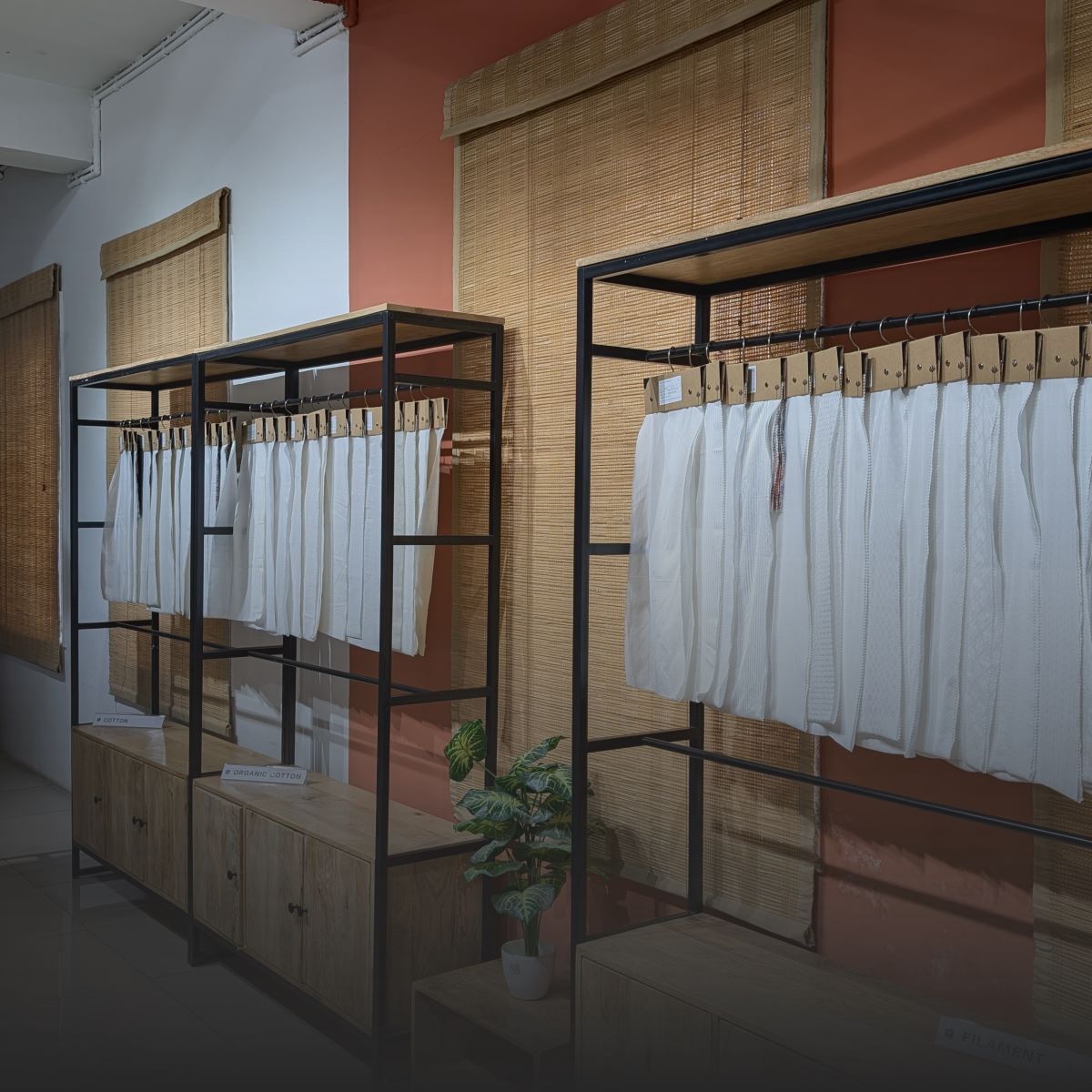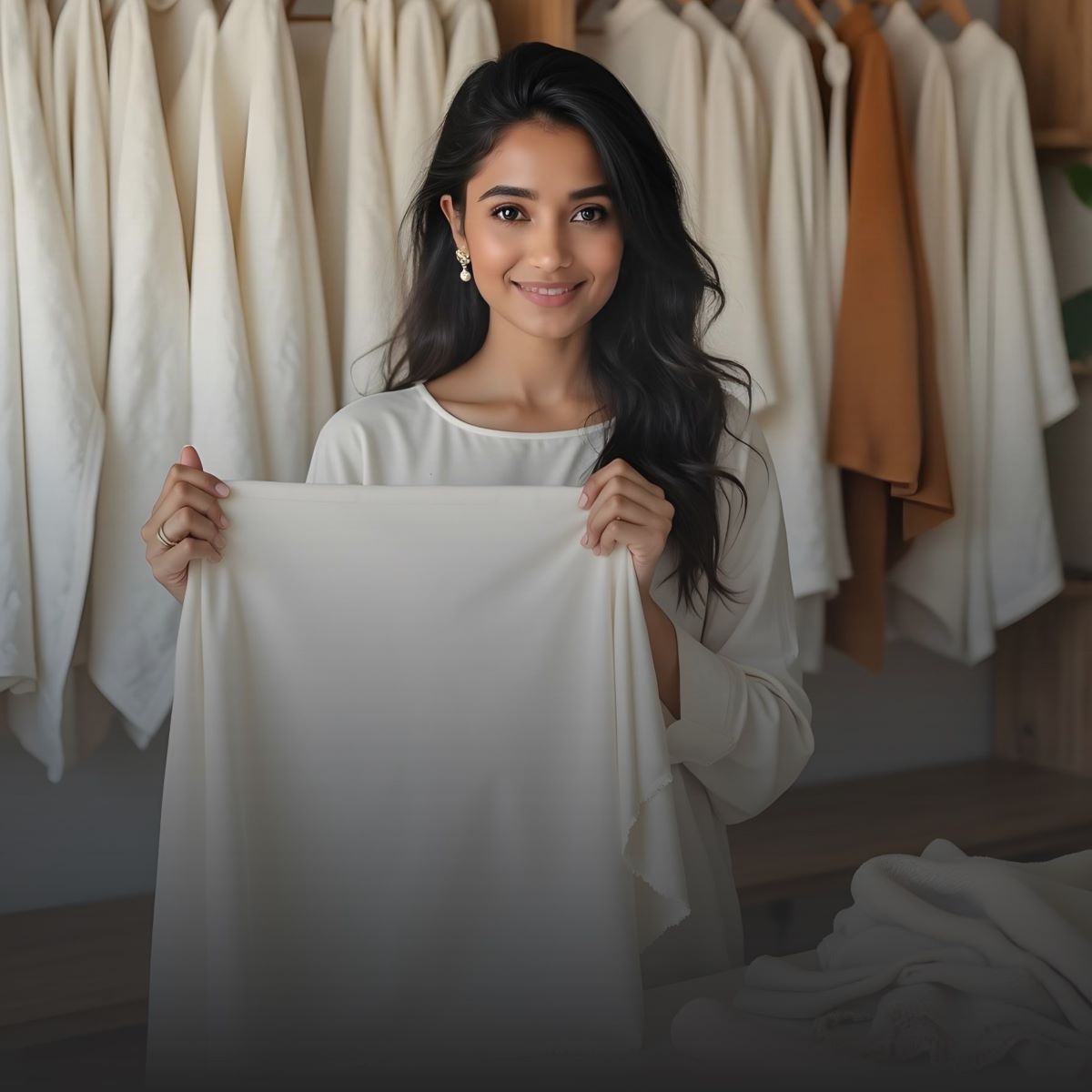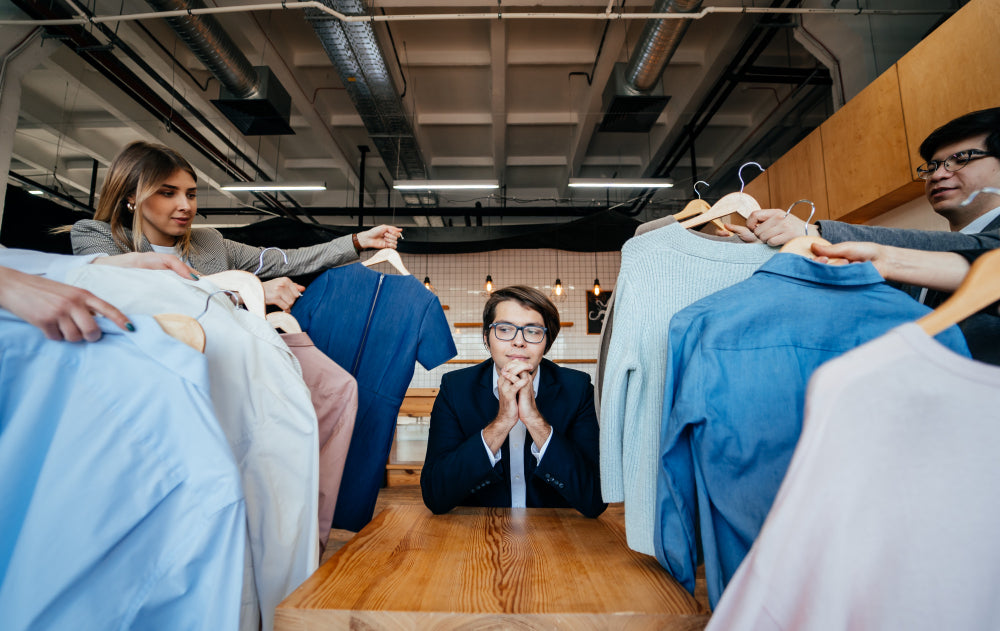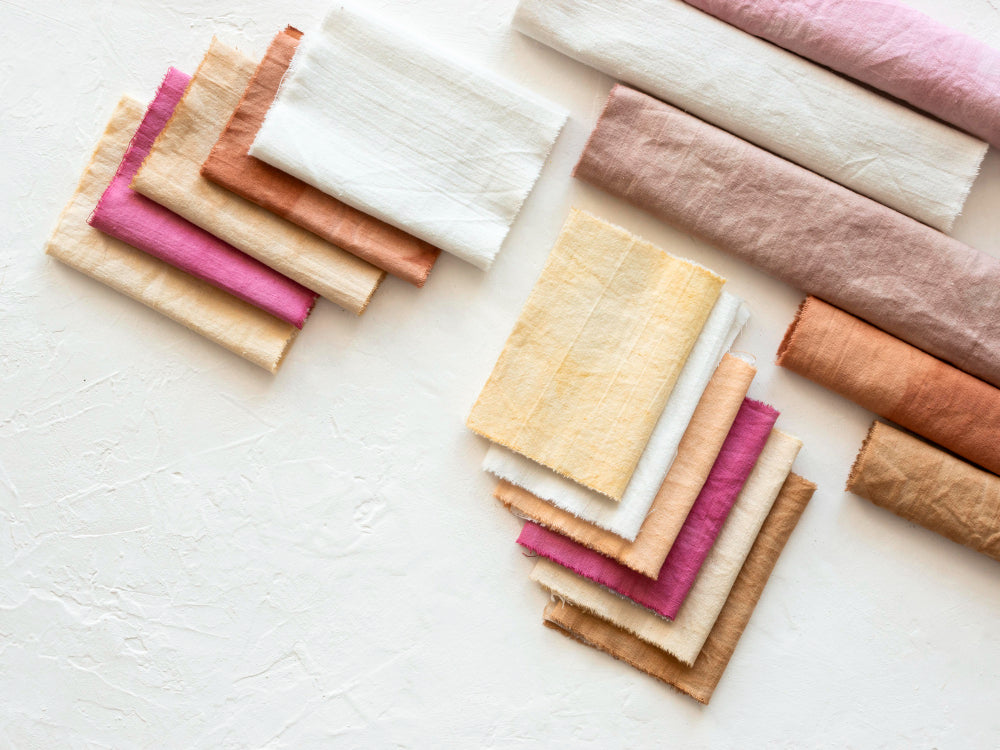Introduction
Resortwear isn't just clothes; it's a way of life that combines style, comfort, and usefulness. Since resortwear is meant to be worn in warm weather and while relaxing, it needs to be made of stylish, light, and airy fabrics.
Choosing the right fabric among a myriad of fabric material suppliers, Myles, dealers, and fabric sourcing platforms is crucial for designers and marketers wanting to produce pieces that appeal to consumers' wants and tastes.
This blog looks into the fundamentals of selecting materials for resort wear, ensuring that your collection fits both aesthetic and functional requirements.
You Can Also Read This For More Related Information : Guide to Sourcing Fabrics from India for US Fashion Brands
Understanding Resortwear Requirements

Before you start thinking about fabrics, you need to know what resortwear needs. People usually wear these clothes in hot, muggy places, so they should be comfortable, easy to wear, and flexible.
1. Climate Compatibility
To handle heat and wetness, resortwear fabrics need to be able to breathe and dry quickly. Materials like cotton, linen, and rayon are common choices because they let air flow and get rid of sweat, which keeps the wearer cool and comfortable in hot places.
2. Occasion and Use
Resortwear should be easy to wear from the beach to dinner in the evening. Fabrics can be used in a variety of situations and are easy to pack up without getting wrinkled. Because the clothes are flexible, they can meet the wants of a wide range of travelers.
3. Fabric Performance Criteria
- Lightweight and breathable: Ensures comfort in hot climates.
- Wrinkle-resistant: Ideal for travel.
- Moisture-wicking: Keeps the skin dry.
-
UV protection: Offers added safety during sun exposure.
Types Of Fabrics For Resortwear

Finding the right fabric means finding a balance between comfort, style, and usefulness. Here is a list of popular types of fabrics that can be used for resortwear.
1. Natural Fibers
People love natural fibres because they are soft and let air pass through them. This makes them perfect for clothes that you wear in warm weather.
Linen:
- Highly breathable and ideal for hot climates.
- Offers a relaxed, natural texture.
- Prone to wrinkling, adding to its casual charm.
Cotton (Voile, Lawn, Poplin)
- Soft, breathable, and versatile.
- Suitable for various garment styles.
- Absorbs moisture, keeping the wearer comfortable.
Hemp
- Durable and eco-friendly.
- Breathes well and softens over time.
- Ideal for structured garments and sustainable collections.
2. Semi-Synthetic/Regenerated Fibers
These fibres beautifully blend luxury aesthetics with a commitment to eco-conscious production.
Rayon / Viscose
- Offers a silky texture and excellent drape.
- Breathable and comfortable for warm weather.
- Requires careful handling to maintain quality.
Tencel (Lyocell)
- Sustainable and biodegradable.
- Moisture-wicking and gentle on the skin.
- Ideal for luxury resortwear lines.
Modal
- Extremely soft with a semi-stretchy quality.
- Resists wrinkling, making it travel-friendly.
- Suitable for casual and comfortable garments.
3. Synthetic Fibers and Blends
While less breathable on their own, synthetic blends can enhance durability and function.
Polyester Blends
- Durable and wrinkle-resistant.
- Retains color well and dries quickly.
- Less breathable; best used in blends.
Nylon + Spandex (Lycra)
- Provides excellent stretch and fit retention.
- Ideal for swimwear and active resortwear.
- Quick-drying and resistant to chlorine.
How To Choose The Right Fabric

Selecting the right fabric goes beyond technical parameters to fit with your brand's vision and consumer experience.
Imagine your creation on fabric. It should appear good and work properly in real life. The correct pick combines comfort, elegance, and functionality.
Consider the garment's application, fall and drape, how it conforms to body movement, wrinkle resistance, stretch, and sheer elegance without compromising comfort when choosing resortwear textiles.
Working with reliable fabric material suppliers and textile suppliers assures that all of your products are resort-ready, breathable, and elegant.
Match Fabric With Garment Use
Each piece in your resortwear collection needs to do a certain job, and the fabric needs to be able to do that job. Right? Your clothing isn't your dress for the evening. That being said, why should they share the same stuff?
Different types of resortwear need different kinds of fabrics:
- Swimwear: Needs materials that are stretchy, dry quickly, and don't get damaged by chlorine and saltwater, like Lycra or nylon blends. Make sure the suit has good elastic rebound so it keeps its shape. You can get high-quality swimwear fabrics by buying from expert fabric wholesale manufacturers.
- Daywear: Pick materials that are light and airy, like rayon, cotton voile, or linen. These materials have a natural sheer look, are soft on the skin, and let a lot of air through, which makes them great for hot weather.
- Eveningwear: Fabrics like Tencel, modal, or high-quality viscose should have a beautiful flow and a shiny finish. They should fall smoothly, have a light sheen, and keep their shape well so that outlines look good even in warm weather.
Test In Real-World Scenarios
Before mass production, test your fabric in real life. It may seem great on a sample swatch, but how will it hold up after a day at the beach or in a suitcase?
The evaluation process:
- Breathability: Wear or test the cloth in environments with high humidity or heat. Can it keep your skin cool? By talking to textile suppliers, you can learn about fabrics that let air flow better.
- Wrinkle Resistance: Put it in a bag or suitcase rolled up. Open it up after a few hours. Does it keep its smoothness? Some materials, like polyester and modal blends, work well here.
- Durability: Test the fabric thoroughly by washing it several times to ensure its colorfastness, shrinkage, and strength are up to par. When sourced correctly, fabrics such as Tencel and cotton blends deliver outstanding performance even after multiple washes.
- Stretch Recovery: Check how much the fabric stretches and if it bounces back without sagging before buying swimsuits or clothes with a tight fit. This is very important for working well in places with a lot of activity or water.
Consider Aesthetic And Drape
It's true: how you look does matter. Fabrics can be soft and technical, but they won't work for your design if they don't flow, shine softly, or hold their shape.
Keep an eye out for these things:
-
Weight and Drape: A loose skirt gives resort wear its signature look. Tencel and viscose fall like silk, which makes them great for dresses and kaftans that move. If the fabric is too heavy for the shape of the clothing, it will sag. If it's too light, it won't look elegant. Discover the incredible variety of fabric sourcing platforms, such as Fabriclore, where you can find the perfect fabric to achieve that ideal drape you've been searching for.
-
Texture and Sheerness: A pristine linen or soft rayon texture should match your brand's image. Resortwear with a hint of sheerness is flirty without overexposure. Voile or semi-transparent modal are good layering fabrics.
-
Luster and Shine: In the evening, materials with a soft sheen, like sateen finish cotton or lyocell, add a sophisticated touch that turns casual clothes into classy attire. Suppliers of clothing materials can offer choices based on the sheen that you want.
- Adaptability: Pick fabrics that don't get stiff when you move, like when you're going along the beach or dancing under the stars. Clothes for vacations need to fit the way you live, not just look good on the rack.
Before you fall in love with a fabric, put it over a dress form and see how it moves and reacts when you tie, fold, or twist it. Does it make the idea better? If so, you should keep it. When you work with wholesale fabric manufacturers in the USA, you can get a lot of different fabrics to try.
Considerations For Fabric Selection

- Eco-Friendly Options: Use organic cotton, Tencel, and hemp, whicResortwear fabric choice has to integrate performance, sustainability, and cost beyond looks. To keep competitive and satisfy customer expectations, American and regional fashion companies must first understand these elements.
Functional Attributes
In resort wear, fabrics must excel in diverse conditions. The crucial functional attributes are as follows:
- UV Protection: Important for keeping skin safe from UV rays, especially when wearing clothes on the beach or outside. Textile sellers may suggest materials that protect against UV light.
- Anti-Microbial Properties: Eliminate odor-causing bacteria to maintain freshness in humid environments. Suppliers are able to offer options that possess these characteristics.
- Moisture-Wicking: Drawing sweat away from the skin keeps the user dry and makes them feel better.
Consider using fabrics such as Tencel and specific polyesters for their functionalities, as they are ideal for active resortwear collections.
Sustainability Factors
Modern consumers prioritize eco-friendly products. Consider the following:
- h break down naturally and are better for the earth.
-
Certifications: Look for GOTS and OEKO-TEX certifications to ensure the fabric meets global environmental and safety standards.
- Supply Chain Transparency: When you buy something, make sure the seller is honest about where they get the ingredients and how they make the goods.
These things not only appeal to people who care about the environment, but they also help reach world sustainability goals.
Sourcing and Budget
Quality and cost must be balanced:
- Quality vs. Cost: To get the most for your money, compare the fabric's performance and longevity to its price. Wholesale manufacturers of quality cloth can give you high-quality fabrics at a low cost.
- Supplier Partnerships: Work together with suppliers who provide low Minimum Order Quantities (MOQs) to minimize inventory risks.
- Customization: Look into custom printing and dying choices to make one-of-a-kind designs that fit with your brand.
Making wise choices about where to get your supplies can have a significant effect on how profitable and responsive your brand is to the market. Working with fabric providers on a wholesale level gives your brand access to a wide range of materials.
Fabriclore: Your Partner In Fabric Sourcing

Fabriclore stands out as a solid partner for fashion brands looking to buy fabric. Fabriclore makes sure that brands can get the best materials for their resort wear collections by connecting them with a vast network of fabric material sources and being dedicated to quality.
The reasons fashion brands like Fabriclore:
- Complete Solutions: From graphic design to researching new fabrics.
- Extensive Network: Strong links with fabric wholesalers all over India make up our vast network.
- Global Reach: We provide our services to clients located all over the world, including fabric wholesalers in emerging fashion marketplaces.
-
Customization: This means making solutions that are specific to the needs of each brand.
Brands can make sure that their resortwear lines are made from high-quality fabrics that appeal to their target audience by working with Fabriclore.
You Can Also Read This: Best Fabric Sourcing for Fashion Designers
Conclusion
When making resort wear that really meets the needs of customers in terms of comfort, style, and usefulness, the choice of fabric is significant.
When designers understand the specific needs of resort wear and think about things like how well the fabric works in different climates and how environmentally friendly it is, they can make decisions that really raise the quality of their designs.
Collaborating with seasoned fabric suppliers such as Fabriclore opens the door to a diverse selection of high-quality materials, enabling brands to transform their creative ideas into reality.
Ready to elevate your resortwear collection? Explore Fabriclore's extensive fabric library and discover materials that bring your vision to life.
You Can Also Read This: Tips on Sourcing Fabric for your Clothing Brand
FAQs
Q1: What Fabrics Are Best For Resort Wear?
Because they let air pass through them, natural fibers like cotton and linen are best. Tencel and Modal are two semi-synthetic choices that are both comfortable and good for the environment.
Q2: How Do I Ensure The Fabric Is Suitable For Tropical Climates?
Test fabrics for breathability, moisture-wicking properties, and UV protection. Materials should be lightweight and quick-drying.
Q3: Are Synthetic Fabrics Suitable For Resort Wear?
There are strong synthetic materials, such as polyester; nevertheless, in order to make them more pleasant and breathable, it is recommended that they be combined with natural fibers.
Q4: How Important Is Sustainability In Fabric Selection?
Increasingly important is the concept of sustainability. Fabrics that are favourable to the environment are more popular among consumers, and certifications such as GOTS and OEKO-TEX can help a brand's credibility.
Q5: Where Can I Source High-Quality Fabrics For Resort Wear?
Platforms like Fabriclore offer a wide range of fabrics suitable for resort wear, along with customization options to meet specific brand needs.
We also happen to be a magnet for suggestions, and would love to catch yours….throw us yours on hello@fabriclore.com




